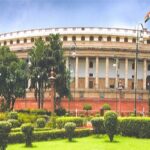Shanti Devi hogged headlines during 1926; when she began to claim that she remembered her past life. At the age of six she told her parents that her husband Kedar Nath Choubey, a clothes merchant in her past life, lived in Mathura, 145 km away from her home
Is the theory of reincarnation or transmigration of souls a myth or reality? After-life concepts have often been discussed and debated over by philosophers and scientists alike.
Greek philosopher Plato’s text ‘Phaedo’ provides an insight into what his teacher Socrates believed in after-death probabilities and what he had proclaimed prior to his death about the inevitability of rebirth.
“I am confident that there truly is a thing as living again, and that the living springs from the dead,” Socrates was quoted as saying. Historian and philosopher Xenophon, however, does not subscribe to what Socrates had to say about reincarnation. Xenophon goes on to suggest that Plato may have systematised Socrates’ thought along with some concepts he took directly from Pythagoreanism.
We do not have to go beyond Indian boundaries for instances of objective evidence that form the basis of past life studies.
The story of Shanti Devi from a village near Delhi makes an interesting reading. Born on December 11, 1926 she hogged headlines when she began to claim that she remembered her past life. At the age of six she told her parents that her husband Kedar Nath Choubey, a clothes merchant in her past life, lived in Mathura, 145 km away from her home. But her parents did not pay much attention to her claims considering those as childishness. On a fine day, she ran away from her home and arrived at a school in Mathura.
She stated at the school that she was married and had a son from her husband. When the school teachers sought to know more about her she responded in a particular dialect spoken in Mathura. She also said she had died ten days after giving birth to a child in her former life.
The minor girl said her husband, a fair complexioned man, wore reading glasses and had a wart on his left cheek.
The teachers, accordingly, spotted Kedar Nath who had lost his wife, Lugdi Devi, nine years ago.
On Kedar Nath’s suggestions Pandit Kanjimal, a relative, who resided in Delhi, was advised to meet Shanti Devi. Kanjimal met her and was convinced that Shanti Devi had a past life memory. On his advice Kedar Nath came to Delhi along with son and present wife.
Shanti Devi recognized Kedar Nath immediately and also his son Navneet Lal.
The matter was brought to the notice of Mahatma Gandhi who constituted a 15-member committee comprising scribes, leaders and politicians in 1935 to probe. The investigators accompanied by Shanti Devi visited Mathura on November 15, 1935. The commission’s report published in 1936 concluded that Shanti Devi was indeed the reincarnation of Lugdi Devi.
In early 1936, rationalist Bal Chand Nahata, however, interrogated Shanti Devi and some of her relatives. He published his brief report in a Hindi booklet Punarjanma Ki Parayyalochana. “Whatever material that has come before us, does not warrant us to conclude that Shanti Devi has former life recollections or that this case proves reincarnation.”
Best selling US author and past life researcher Walter Semkiw has also tried to prove in his book Born Again (2006) that environmentalist Van Jones is the reincarnation of Mahatma Gandhi.
Jones’ facial structure and features resemble Gandhi’s, states Semkiw. “Jones’ manners and body language are similar to that of the Indian Mahatma and he does the same things Gandhi did in Africa during the 1930s — campaign for civil rights… ” Semkiw added. However, several rationalists have their reservations about Dr Semkiw’s findings and his theories.











































